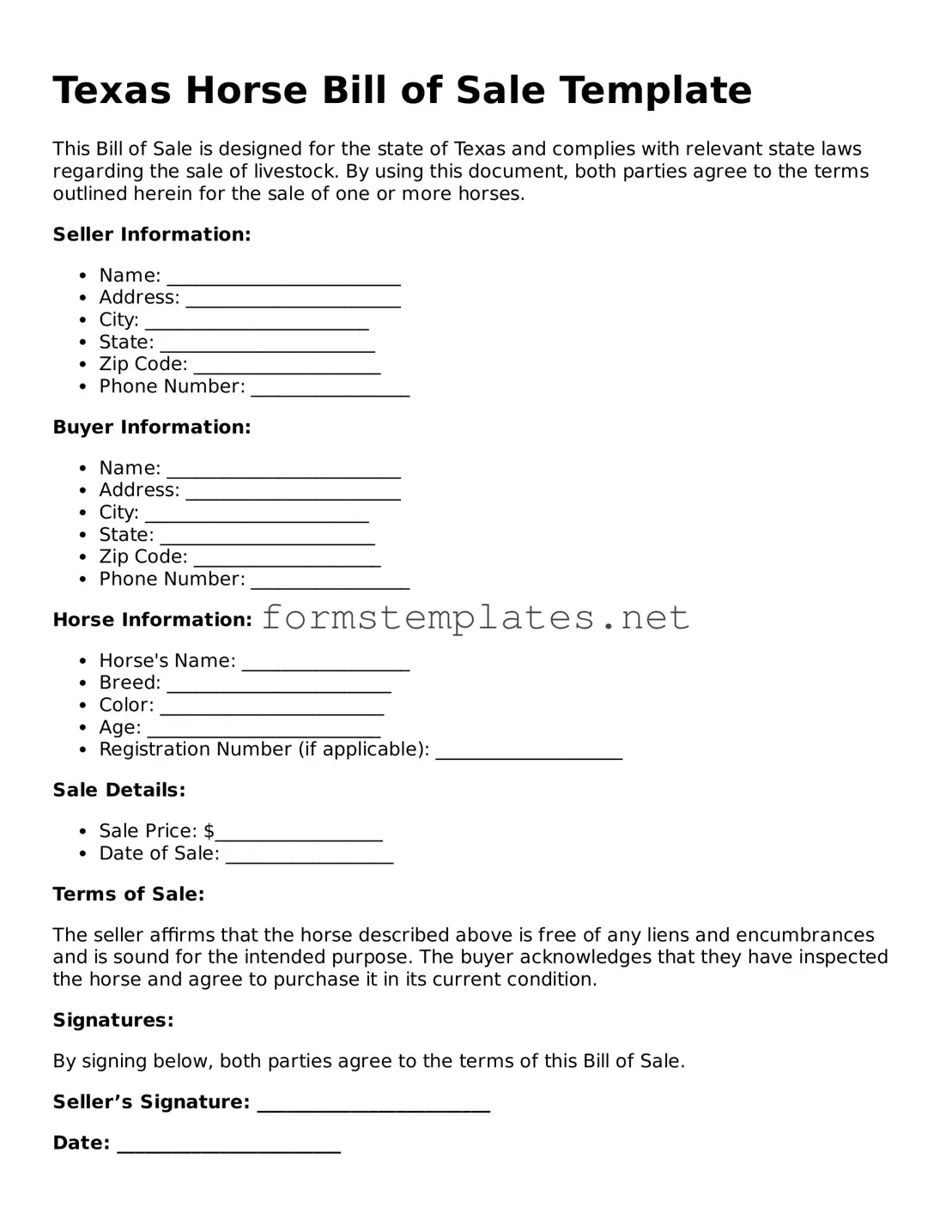Texas Horse Bill of Sale Template
This Bill of Sale is designed for the state of Texas and complies with relevant state laws regarding the sale of livestock. By using this document, both parties agree to the terms outlined herein for the sale of one or more horses.
Seller Information:
- Name: _________________________
- Address: _______________________
- City: ________________________
- State: _______________________
- Zip Code: ____________________
- Phone Number: _________________
Buyer Information:
- Name: _________________________
- Address: _______________________
- City: ________________________
- State: _______________________
- Zip Code: ____________________
- Phone Number: _________________
Horse Information:
- Horse's Name: __________________
- Breed: ________________________
- Color: ________________________
- Age: _________________________
- Registration Number (if applicable): ____________________
Sale Details:
- Sale Price: $__________________
- Date of Sale: __________________
Terms of Sale:
The seller affirms that the horse described above is free of any liens and encumbrances and is sound for the intended purpose. The buyer acknowledges that they have inspected the horse and agree to purchase it in its current condition.
Signatures:
By signing below, both parties agree to the terms of this Bill of Sale.
Seller’s Signature: _________________________
Date: ________________________
Buyer’s Signature: _________________________
Date: ________________________
Please retain a copy of this Bill of Sale for your records.
